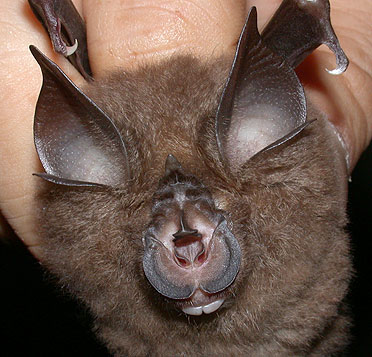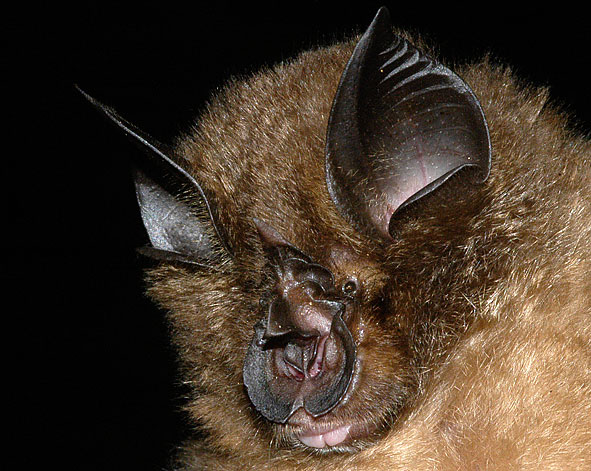Rhinolophus pearsoni
Pearson's Horseshoe Bat
Morphological description Life history Distribution Habitat Roost sites and roosting patterns Emergence and flight pattern Foraging behaviour Echolocation calls Status and protection
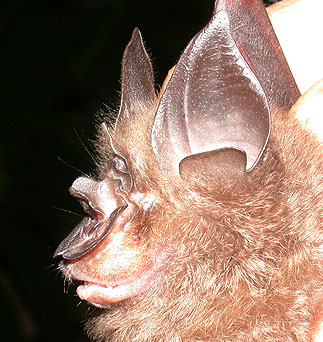
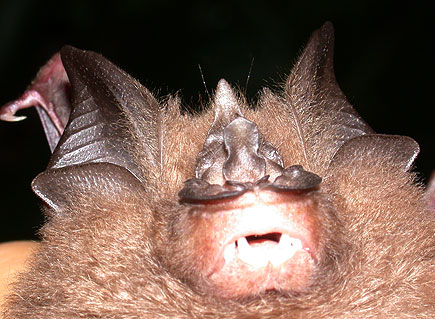
Morphological Description
· Dorsal fur is brown. Ventral fur is lighter than dorsal fur.
· Juveniles are greyer than adults.
· Average forearm length 47.0-56.0mm. (Csorba et al. 2003). Bats in Guangxi had forearm lengths 51.1 - 57.0 mm (n = 5, Guangxi) and 53.1 - 60.4 mm (n = 7, Sichuan).
· The horseshoe is large, the connecting process is rounded. The basal third of the sella is wide. The lower lip has a single mental groove.
· Body mass 13.2-21.8 g (n = 9).
Some authors regard R. yunanensis (found in north east India, north Myanmar, SE China and Thailand) as a species distinct from R. pearsoni (see Csorba et al., 2003). The only reason for this distinction appears to be that R. yunanensis is slightly larger (e.g. forearm lengths 51.5-64 mm vs. 47-56 mm in pearsoni (Csorba et al. 2003)). We regard R. pearsoni as one species that includes bats that would be described as R. yunanensis on the following grounds: the overlap in forearm lengths between the two putative species is substantial; we have found consistency in echolocation call frequencies of bats that would be described as R. pearsoni and R. yunanensis on the basis of regions of non-overlap in forearm lengths of the putative species (i.e. bats with forearm length < 51.5 mm have a similar call frequency to bats with forearm length > 56 mm) and because we have found no clear divergence in mtDNA haplotypes of bats sampled in China.
Life history
· Little known
Distribution
Found over north India, Nepal, Myanmar to China, Vietnam, Lao P.D.R. and Thailand (Csorba et al. 2003). The Chinese distribution is shown by the dots on the map below (as given by Zhang et al . 1997).
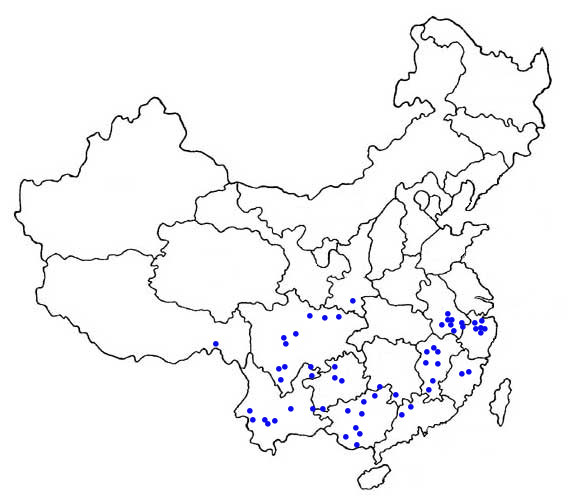
Habitat
· Little known. May prefer mountainous regions (Csorba et al. 2003).
Roost sites and roosting behaviour
· Generally roosts in caves, also recorded in old bomb shelters.
· This species often shares cave roosts with other bat species.
Emergence and flight pattern
· Most rhinolophid bats have wing shapes that make them adept at foraging in cluttered environments.
Foraging behaviour
· Observed perch-hunting in Thailand, from which bats made regular sallies to capture prey. Feeding perches were used on consecutive nights, and were within or on the periphery of bamboo patches (Robinson et al., 1995). .
Echolocation calls
The echolocation call is a long constant frequency signal, with a brief frequency-modulated start and tail. Frequencies with most energy recorded from hand-held bats ranged between 57.6 - 61.6 kHz (n = 5; Guangxi) and 59.6-61 kHz (n = 4 Sichuan).
To listen to the call of the Pearson's horseshoe bat click here
Size of sound file: 100 kb
Status and protection
· There is no estimation of population size in China.
· Pearson's horseshoe bats are LR/lc, assessed by the Red List of Threatened Species (IUCN, 2006): the species is geographically widespread, although little studied. The species is not listed in the Law of the People's Republic of China on the Protection of Wildlife in 1989.
· Caves and old buildings should be protected as important habitats.
